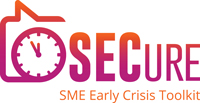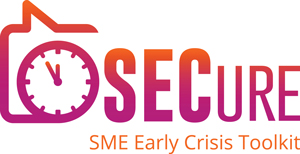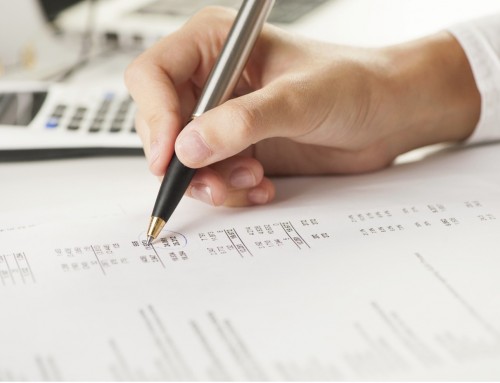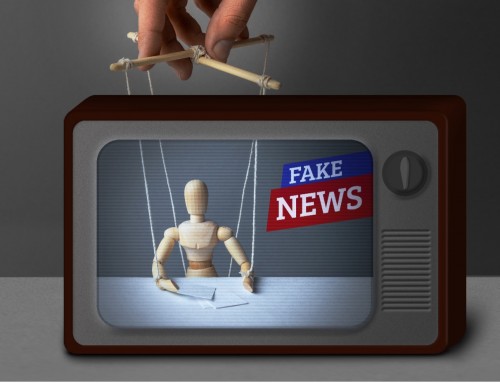Even for critical entrepreneurs and other media users, it is difficult to distinguish real news from fake news.
The creators of fake news have different motives: some deliberately want to stir up insecurity, fear or hatred, others simply “enjoy” influencing third parties, and still others simply “serve” people who are receptive to conspiracy theories. Translation or transmission errors can also lead to fake news.
Below you will find tips on how you can reduce the risk of falling for fake news.
- Why is fake news harmful or even dangerous?
It is not only in times of crisis that people have a great need for information that helps them, for example, to assess risks, to find their way out of a difficult situation or to benefit from particularly favourable offers and prices. However, those who fall for false reports on the way to solutions may suffer even more negative consequences.
Example 1: At the beginning of the Corona crisis, one of the claims was that regular drinking of small sips of water at intervals of about 15 minutes protects against infection. People who blindly believe and follow this thesis increase their risk of infection considerably because they neglect other protective measures, for example.
Example 2: In the run-up to elections, spreading fake news can lead voters to choose another party even though the statements are false.
Example 3: In the business sector, (false) information about expected shortages of certain materials can lead to unnecessary stockpiling at overpriced prices.
The problem with fake news is not only that it spreads rapidly – like the corona virus – when people spread it unchecked on social networks, for example. In addition, once a false report has been circulated, it initially remains an allegation and is often believed by more and more people, who then report it in turn. This is the case even if corrections are published shortly afterwards. In short: False news can thus quickly cause considerable damage, and they are difficult to “catch” and refute.
It is often the case that whoever reacts the fastest after an event and publishes reports gains “interpretive sovereignty” over an issue. And in the age of “copy and paste”, dissemination via all kinds of digital media is now easily possible in a matter of minutes. Since the spreaders of fake news are becoming more and more professional, it is often difficult even for sensitised people to recognise fake news at first glance.
- How can fake news be found and exposed?
How can false reports nevertheless be identified and unmasked with little time expenditure? Every user, businessman or private individual can implement this themselves relatively quickly with a little practice. The time needed for this is well invested: If you are the victim of a false message and therefore make a wrong decision, the consequences are often more serious.
With increasing experience, you not only get a better sense of when it might be a hoax, but you also manage to check it more quickly. It is possible to act accordingly and, for example, refrain from making a delivery that is too expensive.
2.1 Top priority: First be sceptical and critical
Of course, no one can keep track of all the news and check all the information completely for its truthfulness. You should only do this if a certain issue is important for the company or private sector. For example, if a message or information seems strange to you, you should listen carefully and first ask yourself the following questions, for example:
- Is it realistic that there is such a simple solution for such a complex issue?
- Is it plausible that the new offer is 50% below the price that we have been used to for years?
- Do normally well-informed partners in the network not know about possible supply shortages of certain materials?
- Who benefits from acting as the message suggests?
- What could be the reason for publishing information in a certain situation or situation that is supposed to trigger a certain behaviour in the recipient, e.g., to buy more than actually intended?
- Is the report perhaps only ” sensational “, emotional and possibly provided with spectacular pictures to build up pressure so that one acts without thinking much about the facts of the case?
2.2 Research sources
To get well-founded answers to these and other questions, one should observe a few principles that also apply to journalists:
For every piece of information on which you base important decisions yourself or which you want to pass on to business partners, employees, family, or friends, you should first look for the author or source of the information. This can, for example, be a look at the imprint to see who the author of a report is. Without an imprint or an author, one should generally act carefully.
The seriousness of the author can often be checked easily and quickly with a search engine, e.g., by entering the source and the search term “false news” or “fake news”.
It also helps, for example, to further specify and narrow down the search in Google under “Settings” at the bottom right. For example, you can search specifically for pages that contain the exact words of the information you want to check. Because a lot of information and messages are simply spread over and over again with “paste and copy”. In addition, further restrictions can be made, e.g. B. by time period or country. The sources found in this way often allow a good assessment of whether the information is real or false. If studies or other sources are given, you can also check here whether the statements made are correct.
Practical tip:
- Don’t just look at the first page of Google or other search engines, but also analyse at least the following three to four pages. Often, information can also be found there that can be important for the evaluation of a piece of information.
- Avoid forums or blogs that report and present one-sidedly and do not allow or publish critical or dissenting views. It is better to search for a specific message on several reputable channels. If the same information can also be found here, the probability that it is a true message increases. Because it is unlikely that serious media and journalists publish or post something “just like that” without checking it. In social media this is easily possible without such a “corrective”.
2.3 Use multiple search engines and other sources
Anyone who believes that a piece of information may be a hoax should use other search engines besides Google. No search engine provides all the data for a piece of information.
In addition, one should use institutions that have made it their business to identify false news. A possible point of contact can be the german Tagesschau’s fact finder: www.tagesschau.de/faktenfinder.
There are also institutions dedicated to the task of identifying false news. Examples:
- mimikama.at ,
- https://correctiv.org ,
- hoaxsearch.com : Here you can do your own research and report false news or dubious sources for checking.
Practical tip: For German speakers, Bayerischer Rundfunk offers a tutorial with the help of which one can learn to identify false reports: Bayrischer Rundfunk
2.4 Selected options for checking image and video material
Verifying the authenticity of a picture or video is often more complicated. Because the photos are often correct but are used in a different context. The Google image search can help here (upload Google image search). It shows whether, where and in what context pictures have already been published.
Identifying false videos is even more complicated, especially for non-professionals. Because with modern software you can create deceptively real-looking films with false text.
Practical tip: A special search engine from Amnesty International may help. With it, a reverse search on YouTube films for similar films in a different context is possible: Amnesty International
Researching “analogue” sources can also help. B. Industry association, chambers or other organizations with whom you have worked well in the past? Do you know certain facts and how do you assess them?
2.5 Only pass on trustworthy information
And of course, all entrepreneurs and private individuals have the duty and responsibility to only forward or recommend information or reports that appear trustworthy to themselves.
All information and details in our articles and information have been compiled to the best of our knowledge. However, they are provided without liability. This information cannot replace individual advice in specific cases.





